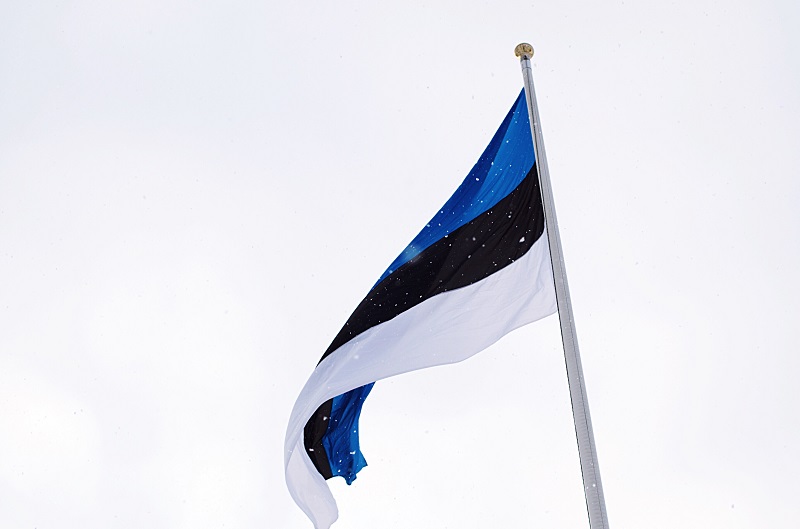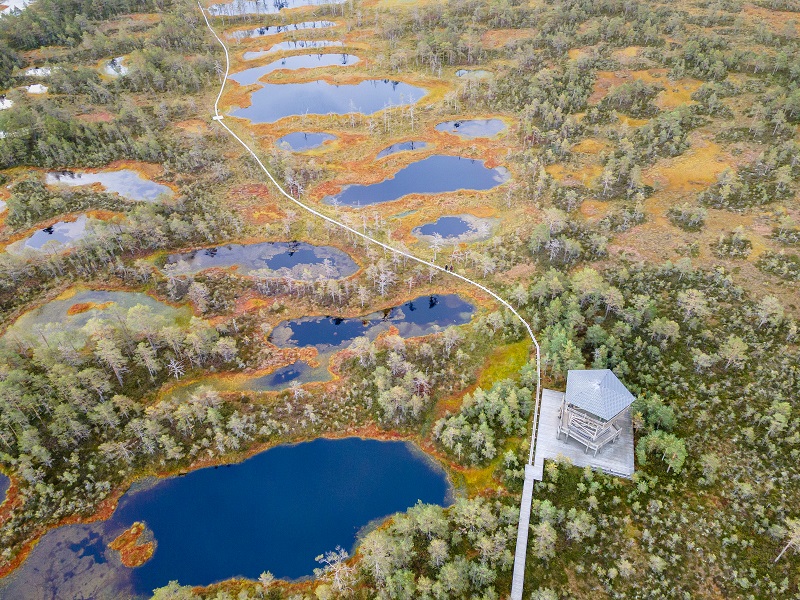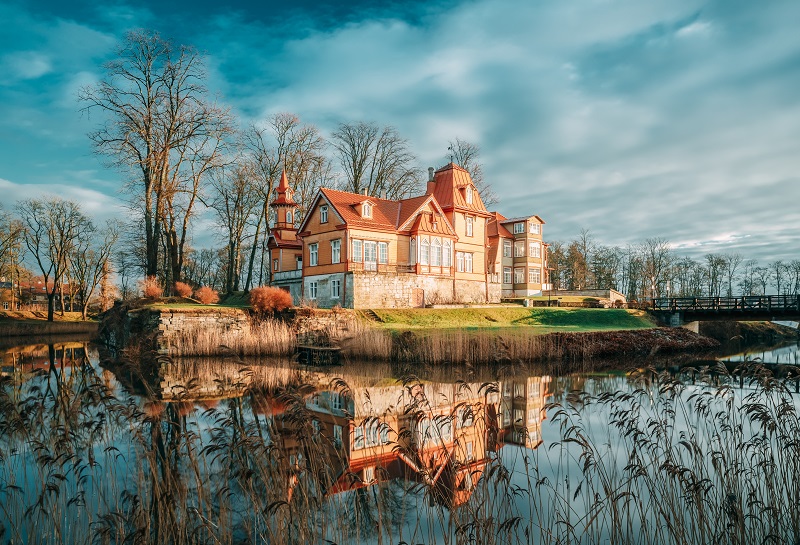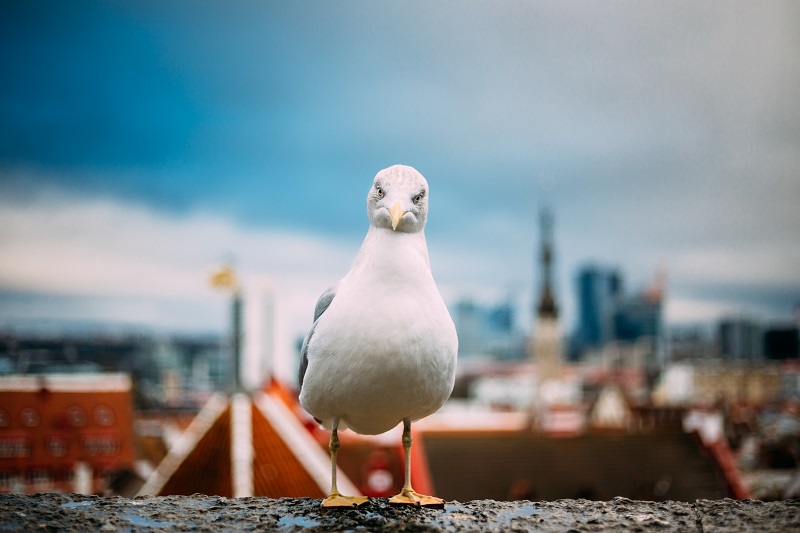The Republic of Estonia, a Baltic country located in Northern Europe, is one of the least populated areas in the European Union. It borders the Gulf of Finland to the north, Russia to the east, Latvia to the south, and the Baltic Sea to the west. Here are some curiosities about Estonia that you might not know.
1. Flag

It has three color stripes: blue, black and white. Blue symbolizes the sky, sea, lakes and the color of the national flower (cornflower), as well as loyalty to national ideas. Black is the color of the earth and national jackets, and also represents the hardships of the Estonian people. Finally, white is the color of purity, freedom and hope for a better future.
2. Tallinn, the capital

Since the country gained independence in 1991, Tallinn has been the capital. It is a city with a long history and a great monumental and cultural heritage, which is why it is a World Heritage Site. Its medieval old town is one of the best preserved in Northern Europe, full of beautiful houses and alleys, and part of the wall that protected it is still standing. Its architectural wealth is very noticeable. Some of the most notable monuments are the Church of San Olaf, the Cathedral of San Alejandro Nevsky, the Church of Santa Maria, the Palace and Gardens of Kadriorg or the Botanical Garden.
3. Country music

Music is very important here. There are many festivals throughout the year; the most emotional and famous of all is Lulupidhu, the Song Festival, which takes place in Tallinn every five years and has been declared an intangible cultural heritage by UNESCO. It is the most important national event.
4. Tragic past

Estonia's past is dramatic, as the losses in World War II are among the highest in Europe. They represent a much higher percentage than in most other countries, with the exception of Poland, Lithuania, Latvia or Belarus. Another 10% of the population were subsequently deported to Soviet labor camps.
5. Language

The official language is Estonian, which belongs to the Baltic-Finnic branch of the Finno-Ugric language family. It has much in common with Finnish and is one of the few languages in Europe that is not of Indo-European origin.
6. One of the least religious countries

Its government is secular and, in addition, its territory is one of the least religious in the world. A large percentage of the population considers itself atheist and does not profess any cults. Despite this, since the 16th century it has established itself as a predominantly Protestant country, and the second largest denomination is Orthodox. There is also a presence of other religions, although in a much smaller percentage, such as Jews, Muslims, Jehovah's Witnesses, Buddhists or Baptists.
7. Territory and history

Estonia joined the USSR in 1940 and belonged to that union until 1991, the year of its independence. However, most Western countries did not officially recognize this annexation and continued to maintain diplomatic relations with their representatives before 1940. Although geographically it is one of the Baltic republics, along with Latvia and Lithuania, its cultural ties are more closely tied to the Nordic nations, especially Finland. Its economy is also very different from other former Soviet republics. In fact, it is one of the least indebted countries in the European Union.
8. The country of new technologies

One sector in which its economy excels is new technologies. It is one of the most connected places in Europe. It is amazing that back in 2005, Estonians were the first in the world to vote in elections online. 99% of state services are provided via the Internet and it is also the country with the largest number of start-ups per capita in Europe, with Skype standing out. It was in 1996 that the government opted for ICT. The goal of the Tiigrihüpe project was to computerize schools and improve the population’s access to technology, which is very common today, but was revolutionary at the time. Estonia is at the forefront in terms of mobile telephony and the Internet, and the telecommunications sector is also of great importance to the GDP.
9. Nature

There are over 1,400 lakes, which is about 4% of its total area. Due to the elevation of the landscape, the rivers are divided into two categories: those that flow from east to west and those that flow from west to east. Interestingly, the highest point in the Baltic States is in Estonia, namely Mount Suur Munamägi, despite the fact that it is more than 300 meters above sea level. In addition, there are more than 1,500 islands, although most of them are uninhabited. It is a very rural land with traces of ancient medieval and Viking culture. On the other hand, more than half of its entire territory is covered by forests, where you can see brown bears, wolves, foxes, rabbits and deer. The climate is continental-humid, with mild summers and quite cold winters.
10. Gastronomy

Estonian cuisine is simple, with pork, vegetables and potatoes as typical ingredients. But due to its history of successive invasions, its recipes are the result of a fusion of all the cultures that have passed through the country. Among the most outstanding dishes we find Mulgikapsad, pork with cabbage and potatoes; Silgusoust, herring with bacon and cream; Sült, pork with lavender jam; pirukki, pastries filled with meat, carrots and cabbage, fried or baked; Seljanka, a soup with ham, sausage and potatoes, or Kisell, a sweet macerated with fruit juice or milk. As for drinks, beer is quite popular. The most famous are saku and saare, although without a doubt the most typical liqueur is called Vana Tallinn, sweet, with a slight rum flavour and quite strong, although with varying gradations of alcohol.













Оставить Комментарий